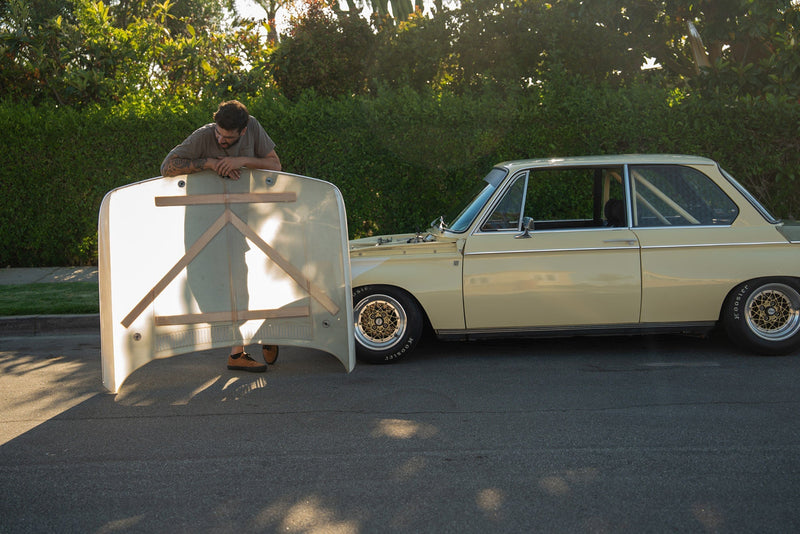The only car to shift the supercar paradigm further than the Lamborghini Miura did in the 1960s was the wedge that replaced it. Marcello Gandini’s follow-up act to the Miura that he drew in his early twenties was not the first overtly angular piece of superlative personal transportation, but whereas most of the radical concepts vying to define the nascent 1970s never made it into production, Lamborghini built the Countach for almost two decades between its 1974 model year debut and its final bow in 1990. Only a shape as radical as this could survive the fickle market of 12-cylinder cars with two seats for so long, which begs the question: which is the definitive version, the one that started it all, or the one that ended it?



It is not uncommon for manufacturers to milk their halo cars far longer than the lifespan of your typical sedan—the new Countach homage being built on the Aventador platform being a perfect modern example of this—but the original Countach arguably set the blueprint: create something so iconoclastically cool that it can simply be updated for the next ten-odd years while your competitors play catch-up. Parties can go all night long, but the sun inevitably rises, and so did it inevitably set on the era of the Countach. All good things must end, but we can still look back on them as fondly, or more so, than ever.
In such a spirit, I recently spent an afternoon with the last of the last: the final serialized, never-been-for-sale Lamborghini Countach. Owned by Lamborghini itself, this is the final example from the final iteration of the Countach, the 25th Anniversario model. Born from a desire to celebrate the company’s quarter-century of operation in 1988, this particular Countach iteration was something of an anomaly. The hope was that the then-upcoming replacement for the car, the Diablo, would be finished in time for the milestone, but since it was still far from production-ready Lamborghini chose to update the Countach (again) for the role. The anomalous bit is that this holdover model became the best-selling version of the Countach.




But sales figures and production numbers (657 units of the “25th” were sold) should not be the defining traits of a supercar, let alone a Countach. To that end, the commemorative Countach was more than just a best-selling-greatest-hits-mobile. Adding to this Countach’s contradictory character is the fact that it was most driver-friendly version (standard power windows and seats being just one creature comfort missing in older, rawer bulls of the breed), but it was also somewhat related to the prototype for the lightest, fastest, and least “lux” Countach of them all, the Evoluzione.


By the late 1980s, Horacio Pagani, still many years away from forming his eponymous company, was in charge of Lamborghini’s advanced composites department, and his team used the Countach to develop and test their ideas. The prototype that became known as the Countach Evoluzione was a pioneering achievement in the use of carbon fiber and other lightweight materials, and was the first car that Lamborghini used to experiment with carbon fiber monocoques. It was also reportedly over one thousand pounds lighter than the production model, used carbon and kevlar for the majority of its panels, and served as an early test bed for Lamborghini’s eventual adoption of all-wheel drive, among other research endeavors. The Evoluzione never made it past the single prototype stage, but when Pagani was tasked next with overseeing the restyling for the 25th Anniversario production car he incorporated some of the aerodynamic and cooling knowledge gained during development of the Evoluzione. It’s a stretch to say that the two cars have much in common philosophically—one is a lavish celebration of 25 years of history, the other a bleeding edge testbed for the future—but in hindsight it is interesting to see how these two projects would echo in Pagani’s later work.



To get a better sense of this Lamborghini’s presence off paper and in the real world, the company-appointed driver and my new friend, Vincenzo, and I ran this bull through the old town squares of nearby Modena for this photoshoot. The contrast of old stone facades and original architecture with the silvery strakes of the ultimate—whether or not you agree figuratively, this is the ultimate, or very last, of the Countach breed—make it easy to reflect on the car’s place in history.







To bring up the question from my opening paragraph, how do you define something that is both ubiquitously known but also variable? There is a massive difference in not only the aesthetics but also the driving experience between the first Gandini concept and the augmented, wide-bodied versions that followed and led to the “25th.” Which is the most Countach? The argument for the original doesn’t need to be restated for the umpteenth time, but whatever your taste may be there is also something to be said for the very last car being the most representative—and in this case on a pure population basis, there are a lot more of these than early narrow-body periscopico versions. The Countach has always been unorthodox and hyperbolic, so it wouldn’t be unfounded to say that the one with the most scoops, the most slats, and the most vents is the most Countach.

I’m not making a case for one side or the other, though, because the real allure of the Countach, to me, is that even almost half a century later on, it can still drum up a passionate argument. It is still polarizing. It still balances on the knife’s edge of outrageously cool and ridiculously pointless. It still puts heads on a swivel, still steals your breath away, still looks like nothing else on the road. Supercars have only gotten faster and more expensive and more exclusive, but none have or will have the impact of this car, none are so bold an exclamation point. There can only be one: Countach!
























































